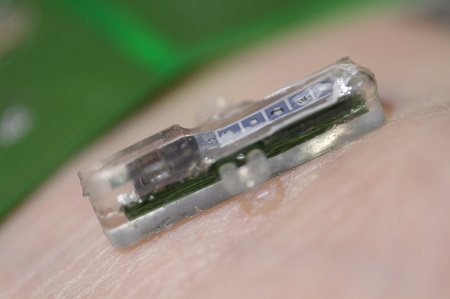In a ground breaking technological development, Swiss scientists have created a device that can test your blood and send out the results via Bluetooth.
You get up early, you get dressed and you make your way to your Doctor’s office. There, you sit and wait for what feels like eons for a a licensed medical professional to walk along and painfully jab a needle into your arm, attempting to get a reading from a barely visible vein. Then you wait 3 week long, tedious weeks for the results to come back.
What I’ve just described is the long and often painful process that most people go through to have a bloodtest, of which the results might be unhelpful or inconclusive. Now, a new, ground-breaking development in the world of science and nano-technology means that not only can you have the results hours before your doctor would have even gotten your blood to the lab, this new device could even save your life.
Designed by the EPFL Integrated Systems Laboratory, a team of scientists in Switzerland, the unnamed device works by detecting particular compounds in the body. It would be placed just under your skin in body tissue, in your arm for example, and as it comes into contact with compounds and metabolites found in your body, it can process the information and transmit it to your smartphone or iPad via Bluetooth, and then that info can be passed on to your doctor.
Some particularly interesting selling points of it are that one of the compounds it detects can measure whether you are at risk of a heart attack. No, not just if you are at risk of having one at some point in your lifetime, it can tell you if you’re going to suffer one within the next few hours. This development could mean that not only could someone be prepared for it, they might even be able to seek medical advice before the heart attack is set to happen. In turn, the device also measure glycerine, a chemical related to blood sugar, meaning that if the level is too high or too low, those with diabetes can also prepare for the effects of that, or prevent anything from happening at all.
The device doesn’t include a battery and is ‘charged’ by a flat wireless, material-looking thing that can be placed on top of the skin, above the device when needed. This is also responsible for how the information is transmitted out.
It’s been tested out on animals, but is a few years off from being widely available. Watch a video from the scientists at EPFL on how it works, below.
Source : EPFL
Read more on walyou, New 3-Dimensional Technology May Help Create iPhone 3D, Philips DesignLine TV Sets Blend Seamlessly Into Living Rooms











